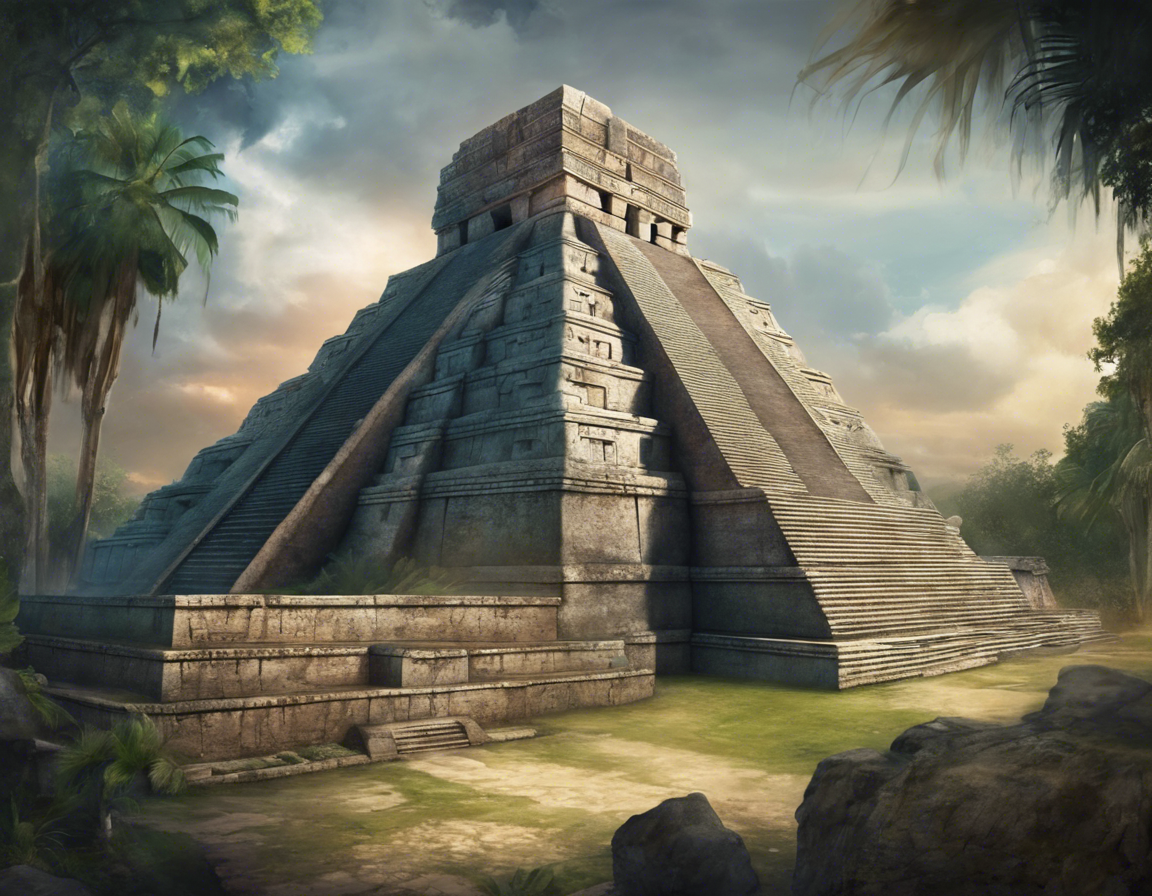
Exploring Ancient Mayan Temples in Mexico: An Adventurous Journey Through History and Culture:
Embark on an unforgettable adventure as we delve into the captivating world of ancient Mayan temples in Mexico. From the iconic pyramids of Chichen Itza to the hidden gems of Palenque, these awe-inspiring structures stand as a testament to the ingenuity and resilience of the Mayan civilization. Get ready to uncover the secrets of the past, explore breathtaking landscapes, and immerse yourself in the vibrant culture that still thrives today.
A Brief History of Mayan Temples in Mexico:
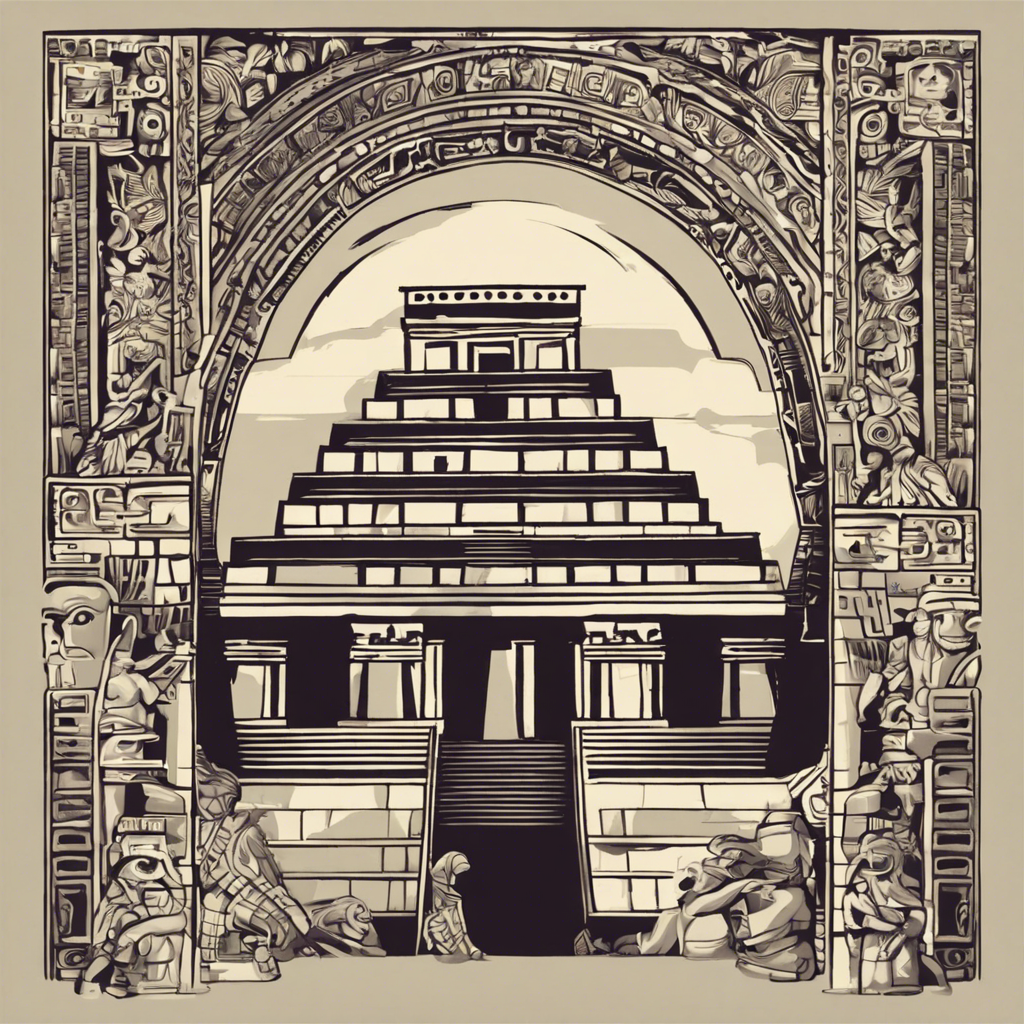
The history of the Mayan temples in Mexico is a fascinating journey through time, showcasing the achievements of one of the most advanced civilizations in the ancient world. The Maya civilization, which thrived from around 1800 BCE to the arrival of Europeans in the 16th century, is renowned for its monumental architecture, intricate art, and sophisticated understanding of mathematics and astronomy.
Origins and Development of the Mayan Civilization
The earliest Maya settlements emerged around 1800 BCE, primarily as agricultural communities. They cultivated crops such as maize, beans, and squash, gradually developing more sophisticated farming techniques. By the Pre-Classic Period (approximately 1800 BCE to 250 CE), the Maya began constructing ceremonial centers and pyramids, laying the groundwork for the grand temples that would define their civilization.
The Classic Period (250 CE to 900 CE) marked the peak of Mayan civilization, characterized by the construction of impressive city-states like Tikal, Palenque, and Calakmul. During this time, the Maya developed a complex social structure, with a ruling elite that included kings and priests who conducted religious ceremonies and rituals. The Maya worshipped a pantheon of over 150 gods, each associated with various aspects of life, such as agriculture, rain, and death. This deep spiritual connection influenced their architectural designs, as many temples were built to honor these deities and align with astronomical events.
Architectural Marvels: The Temples
Mayan temples served multiple purposes: they were places of worship, centers for astronomical observations, and sites for important rituals, including human sacrifices. The construction techniques employed by the Maya were remarkable, utilizing locally sourced limestone and advanced engineering methods to create structures that have withstood the test of time.
Notable Temples and Sites
Chichen Itza: Perhaps the most famous of all Mayan sites, Chichen Itza is home to the Temple of Kukulkan (El Castillo), a step pyramid that demonstrates the Maya’s astronomical knowledge. The pyramid features 365 steps, corresponding to the days of the year. During the equinoxes, shadows cast by the pyramid create the illusion of a serpent slithering down its steps, a testament to the Maya’s intricate understanding of celestial movements.
Tulum: This coastal city is unique as it is the only Mayan site located by the Caribbean Sea. Tulum reached its peak between the 13th and 15th centuries and was an important trading hub. The site features well-preserved structures, including the Temple of the Frescoes, which showcases vibrant murals depicting Mayan deities.
Palenque: Nestled in the Chiapas jungle, Palenque is known for its stunning architecture and intricate carvings. The Temple of Inscriptions, which houses the tomb of the great ruler Pakal, is a highlight. The site reflects the Maya’s advanced artistic skills and their deep connection to their rulers’ divine status.
Uxmal: A UNESCO World Heritage site, Uxmal is renowned for its unique architectural style, characterized by rounded corners and elaborate stonework. The Pyramid of the Magician, with its distinctive shape, is one of the site’s most iconic structures.
Coba: This site features the tallest pyramid in the Yucatan Peninsula, Nohoch Mul, which visitors can still climb today. Coba was a significant city during the Classic Period, with a vast network of stone roads connecting it to other major sites.
The Decline of the Mayan Civilization
The decline of the Mayan civilization began around 900 CE, leading to the abandonment of many city-states. Scholars suggest that a combination of factors, including environmental degradation, warfare, and prolonged drought, contributed to this decline. However, the Maya did not vanish; millions of descendants still live in Mexico and Central America today, preserving many aspects of their ancient culture.
Modern-Day Significance
Today, the Mayan temples are not only archaeological treasures but also vital cultural symbols for the indigenous Maya people. Many communities continue to practice ancient traditions and rituals, blending them with modern life. The temples attract millions of tourists each year, contributing to local economies and fostering a renewed interest in Mayan history and culture.
The history of the Mayan temples in Mexico is a testament to the ingenuity and resilience of the Maya civilization. From their agricultural roots to the construction of monumental temples, the Maya left an indelible mark on the world. As we explore these ancient sites, we not only connect with the past but also gain insight into the enduring legacy of the Maya people, who continue to thrive in the modern world.
Top 15 Mayan Temples to Visit in Mexico:
The Mayan civilization, known for its remarkable achievements in architecture, mathematics, and astronomy, left behind a wealth of archaeological treasures in Mexico. Here are the Top 15 Mayan Temples to Visit in Mexico, each offering a unique glimpse into the grandeur of this ancient culture.
1. Chichen Itza
Location: Yucatán Peninsula
Highlights: As one of the New Seven Wonders of the World, Chichen Itza is a must-visit. The iconic El Castillo pyramid, dedicated to the feathered serpent god Kukulkan, features 365 steps, one for each day of the year. The site also includes the Great Ball Court and the Temple of the Warriors, showcasing the sophistication of Mayan architecture and culture.
2. Tulum
Location: Quintana Roo
Highlights: Tulum is unique for its stunning coastal location overlooking the Caribbean Sea. The well-preserved ruins include the Temple of the Frescoes, adorned with murals depicting Mayan mythology. Tulum’s picturesque setting makes it a favorite for both history buffs and beach lovers.
3. Palenque
Location: Chiapas
Highlights: Nestled in the jungle, Palenque is known for its intricate carvings and stunning architecture. The Temple of Inscriptions houses the tomb of the great ruler Pakal. The site’s lush surroundings add to its mystical atmosphere, making it a captivating place to explore.
4. Coba
Location: Quintana Roo
Highlights: Coba is famous for its expansive network of ancient roads and the Nohoch Mul pyramid, the tallest in the Yucatán Peninsula. Visitors can climb the pyramid for breathtaking views of the surrounding jungle. The site is less crowded than others, allowing for a more intimate experience with history.
5. Uxmal
Location: Yucatán Peninsula
Highlights: A UNESCO World Heritage site, Uxmal is renowned for its unique architectural style featuring rounded corners and elaborate stonework. The Pyramid of the Magician is particularly striking, and the site is known for its impressive Governor’s Palace.
6. Calakmul
Location: Campeche
Highlights: Hidden deep in the jungle, Calakmul is one of the largest Mayan cities discovered, with over 6,500 structures. The Great Pyramid rises about 180 feet, offering panoramic views of the surrounding biosphere reserve. The site is also rich in wildlife, making it a great destination for nature lovers.
7. Ek Balam
Location: Yucatán Peninsula
Highlights: Ek Balam is known for its well-preserved structures and intricate stucco carvings. The Acropolis features a stunning view from the top, and visitors can also explore nearby cenotes for a refreshing swim after their archaeological adventures.
8. Edzna
Location: Campeche
Highlights: Edzna, meaning “House of the Itzás,” is known for its impressive Gran Acropolis and Temple of the Masks. The site offers a glimpse into the lesser-known aspects of Mayan civilization and is less frequented by tourists, providing a peaceful exploration experience.
9. Chacchoben
Location: Quintana Roo
Highlights: Chacchoben is a beautiful site with well-preserved temples and ceremonial plazas. It is known for its lush surroundings and is often included in guided tours from nearby cruise ports, making it accessible for visitors.
10. Tikal
Location: Guatemala (near the border with Mexico)
Highlights: Although primarily located in Guatemala, Tikal is often visited by travelers in Mexico. This vast site features towering pyramids, including Temple I (Temple of the Great Jaguar) and Temple II, surrounded by rich wildlife in the rainforest.
11. Yaxchilan
Location: Chiapas
Highlights: Yaxchilan is situated along the Usumacinta River and is known for its impressive stone carvings and stunning architecture. Accessed by boat, the site offers a remote and adventurous experience, with the Temple of the Inscriptions being a highlight.
12. Bonampak
Location: Chiapas
Highlights: Bonampak is famous for its vibrant murals that depict Mayan rituals and warfare. The site provides a unique insight into the life and culture of the Maya, making it a fascinating stop for those interested in art and history.
13. Monte Alban
Location: Oaxaca
Highlights: While not strictly a Mayan site, Monte Alban was a significant Zapotec city that influenced the Maya. The site features impressive terraces and pyramids, offering stunning views of the surrounding valleys.
14. Teotihuacan
Location: State of Mexico
Highlights: Another non-Mayan site, Teotihuacan is one of the most important archaeological sites in Mexico, known for the Pyramid of the Sun and Pyramid of the Moon. Its influence on the Maya is evident, and it remains a popular destination for its grandeur and historical significance.
15. El Tajín
Location: Veracruz
Highlights: El Tajín is known for its unique architectural style, including the Pyramid of the Niches. The site is famous for its intricate carvings and is a UNESCO World Heritage site, showcasing the cultural richness of the ancient civilizations of Mexico.
Visiting these Mayan temples offers a remarkable opportunity to connect with the ancient world and appreciate the ingenuity of the Maya civilization. Each site tells a story of its own, reflecting the culture, beliefs, and achievements of the Maya. Whether you’re an avid historian, an adventurer, or simply seeking a unique travel experience, these temples are sure to leave a lasting impression.
10 Best Things for Couples to Do in Mayan Temples in Mexico:
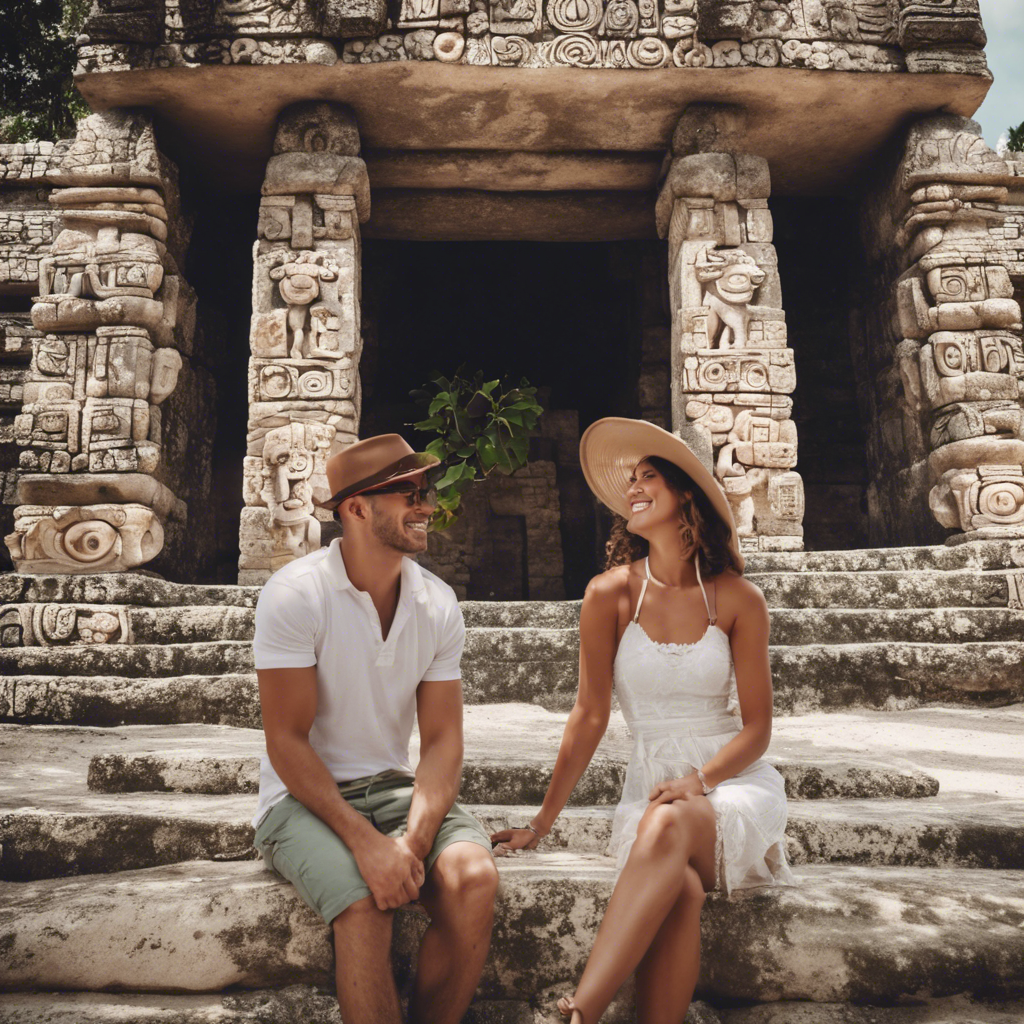
Exploring the Mayan temples in Mexico offers couples a unique blend of adventure, romance, and cultural immersion. Here are the 10 Best Things for Couples to Do in Mayan Temples in Mexico, ensuring an unforgettable experience together.
Sunset at Chichen Itza
Witnessing the sunset at Chichen Itza is a magical experience. The iconic El Castillo pyramid casts stunning shadows as the sun dips below the horizon, creating a romantic backdrop for couples. Plan your visit during the equinoxes to see the serpent shadow effect, which adds an extra layer of enchantment to your experience.
2. Cenote Swimming
Cenotes, natural sinkholes filled with crystal-clear water, are abundant in the Yucatán Peninsula. Couples can enjoy a refreshing swim or snorkel together in these magical settings. Popular cenotes like Cenote Ik Kil near Chichen Itza or Cenote Dos Ojos near Tulum provide stunning scenery and an intimate atmosphere, perfect for a romantic day out.
3. Explore Tulum’s Ruins
Tulum is unique for its stunning coastal location overlooking the Caribbean Sea. Couples can explore the well-preserved ruins, including the Temple of the Frescoes, and then relax on the nearby beach. The combination of history and natural beauty makes Tulum a perfect romantic getaway.
4. Dinner Cruise on a Catamaran
After a day of exploring, couples can indulge in a romantic dinner cruise on a catamaran along the Riviera Maya. Enjoy a gourmet meal while sailing into the sunset, complete with live music and breathtaking views. This intimate setting creates the perfect ambiance for a memorable evening together.
5. Horseback Riding on the Beach
Experience the beauty of the Riviera Maya with a sunset horseback ride along the beach. Many tour operators offer guided rides that take you through the jungle and onto the sandy shores, providing a romantic and adventurous way to connect with nature and each other.
6. Visit the Ruins of Coba
Coba is known for its ancient pyramids and lush jungle surroundings. Couples can rent bicycles or hire a guide to explore the site together. Climbing the Nohoch Mul pyramid for panoramic views is a thrilling experience that adds a sense of adventure to your romantic getaway.
7. Spa Day at a Resort
After a day of exploring the temples, couples can unwind with a luxurious spa day at one of the many resorts in the area. Indulge in couples massages, rejuvenating treatments, and relaxation in serene settings. Many resorts offer spa packages that include access to pools and wellness facilities.
8. Stargazing at Uxmal
Uxmal, known for its stunning architecture, offers a quieter atmosphere in the evenings. After exploring the ruins during the day, couples can return at night for stargazing. The clear skies and minimal light pollution create a perfect setting for a romantic evening under the stars.
9. Dining at Local Restaurants
Experience the local cuisine by dining at charming restaurants near the temples. Many places offer traditional Yucatecan dishes, such as cochinita pibil and fresh seafood. Enjoying a meal together in a cozy setting enhances the romantic atmosphere of your trip.
10. Cultural Experiences
Engage in cultural experiences by participating in traditional Mayan ceremonies or workshops. Couples can learn about ancient rituals, crafts, or cooking classes that provide a deeper understanding of the Mayan culture. These shared experiences can strengthen your bond while creating lasting memories.
The Mayan temples in Mexico offer couples a rich tapestry of experiences that blend adventure, romance, and history. From exploring ancient ruins to relaxing in cenotes and enjoying intimate dinners, there are countless ways to connect with each other and the fascinating culture of the Maya. Whether you’re seeking thrills or tranquility, the Yucatán Peninsula is a perfect destination for couples looking to create unforgettable memories together.
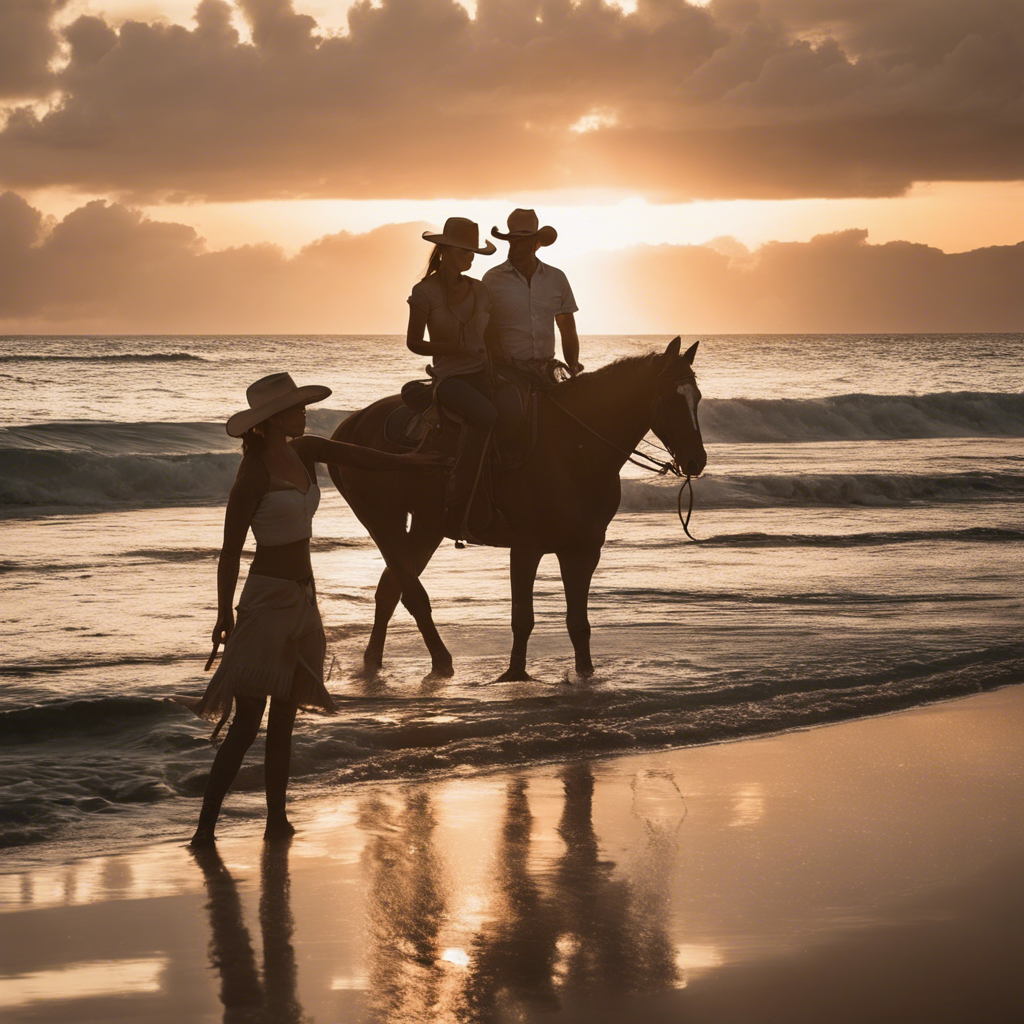
Nightlife and Top Restaurants in Mayan Temples, Mexico:
The nightlife and dining experiences around the Mayan temples in Mexico offer a vibrant mix of cultural immersion, culinary delights, and entertainment. Here’s an exploration of the best nightlife options and top restaurants to enjoy while visiting these historical sites.
Nightlife Near Mayan Temples
Playa del Carmen
Coco Bongo: Renowned for its extravagant shows, Coco Bongo combines a nightclub atmosphere with live performances, acrobatics, and music from various eras. It’s a must-visit for those looking to dance the night away after a day of exploring ancient ruins.
La Vaquita: Known for its lively beach parties, La Vaquita features a fun, casual atmosphere with great music and dancing. It’s perfect for those looking to enjoy a more laid-back night out.
Mandala: This upscale nightclub offers a glamorous setting with top DJs, vibrant decor, and a lively crowd. It’s a great spot for couples looking to enjoy a romantic night out.
Tulum
Papaya Playa Project: This beachfront venue hosts regular parties and events, often featuring live DJs and a bohemian vibe. The stunning ocean views create a magical atmosphere for an evening out.
Casa Jaguar: A popular restaurant by day, Casa Jaguar transforms into a lively bar at night, offering creative cocktails and a vibrant atmosphere. It’s a great place to unwind after a day of exploring Tulum’s ruins.
Cancun
The City: As one of the largest nightclubs in Latin America, The City hosts international DJs and offers a high-energy atmosphere. It’s ideal for those looking to experience Cancun’s nightlife at its peak.
Dady’O: Known for its themed parties and vibrant ambiance, Dady’O is a staple in Cancun’s nightlife scene, attracting a diverse crowd.
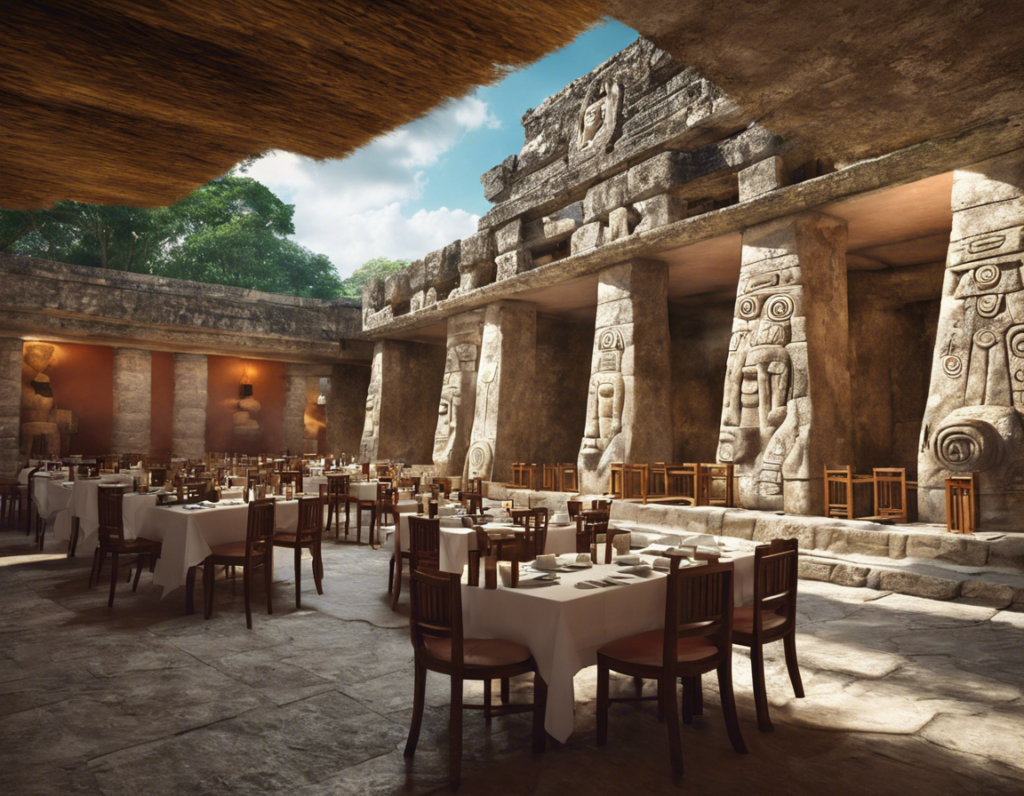
Top Restaurants Near Mayan Temples:
Chichen Itza
El Meson del Marques: Located in Valladolid, this charming restaurant offers traditional Yucatecan cuisine in a beautiful colonial setting. Dishes like cochinita pibil and pollo pibil are must-tries.
Restaurante La Casona: Known for its local flavors and friendly service, La Casona offers a variety of Mexican dishes, including fresh seafood and traditional Yucatecan fare.
Tulum
Hartwood: This acclaimed restaurant focuses on locally sourced ingredients, offering a seasonal menu that changes daily. The open-air setting and wood-fired cooking create a unique dining experience.
Ziggy Beach: A beachfront restaurant known for its relaxed vibe and delicious breakfast, Ziggy Beach also serves fresh seafood and cocktails, making it a perfect spot to unwind after a day of exploration.
Palenque
Cafe Jade: A cozy spot near the ruins, Cafe Jade offers a selection of local dishes and refreshing beverages. It’s a great place to recharge after a day of exploring the ancient city.
Restaurant Don Muchos: Known for its friendly atmosphere and authentic Mexican cuisine, Don Muchos serves everything from tacos to traditional Yucatecan dishes.
Coba
La Selva: Located near the Coba ruins, La Selva offers a variety of traditional dishes in a relaxed setting. The restaurant is surrounded by nature, providing a peaceful dining experience.
Cenote Multum Ha: This unique dining spot allows visitors to enjoy a meal by a cenote, combining the beauty of nature with delicious local cuisine.
Uxmal
The Uxmal Resort: This resort offers a restaurant with a menu featuring traditional Yucatecan dishes. Dining here allows guests to enjoy local flavors while taking in views of the surrounding landscape.
Hacienda Uxmal: This historic hacienda features a restaurant that serves a mix of traditional and contemporary dishes, perfect for those looking to enjoy a meal after exploring the nearby ruins.
The nightlife and culinary scene surrounding the Mayan temples in Mexico provide a rich and enjoyable experience for travelers. From vibrant nightclubs and beach parties to top-notch restaurants serving authentic Yucatecan cuisine, there’s something for everyone. Whether you’re looking to dance the night away or savor delicious local dishes, the areas around these ancient sites offer a perfect blend of history, culture, and entertainment.
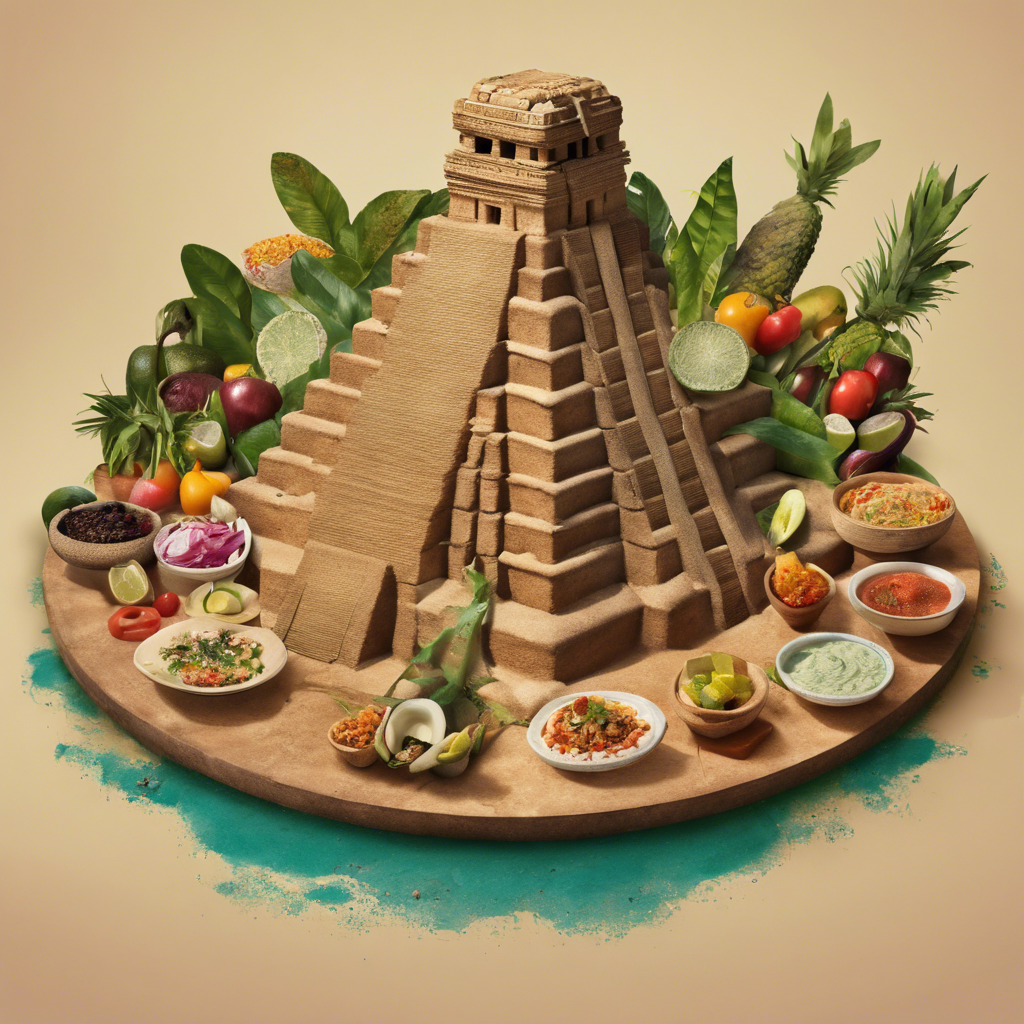
Top 15 Things for Families to Do in Mayan Temples, Mexico:
Explore the interactive exhibits at the Mayan Museum in Cancun, learning about the history and culture of the Maya.
Take a guided tour of Chichen Itza, with a focus on the site’s history and significance to the Maya.
Cool off in the crystal-clear waters of the cenote at Dzitnup, a natural wonder that was sacred to the Maya.
Embark on a snorkeling adventure at Xel-Ha, exploring the colorful marine life and ancient ruins beneath the surface.
Participate in a traditional Mayan cooking class, learning how to make authentic dishes like cochinita pibil and sopa de lima.
Visit the Sian Ka’an Biosphere Reserve, a UNESCO World Heritage site that’s home to a diverse array of wildlife, including jaguars, spider monkeys, and hundreds of bird species.
Take a guided tour of Ek Balam, with a focus on the site’s impressive Acropolis and intricate stucco carvings.
Explore the interactive exhibits at the Mayan Museum in Merida, learning about the history and culture of the Maya.
Take a family photo in front of the iconic El Castillo pyramid at Chichen Itza.
Participate in a traditional Mayan ceremony, learning about the rituals and beliefs of the Maya.
Visit the Mayan ruins of Tulum, with a focus on the site’s stunning natural setting and well-preserved structures.
Take a guided tour of Coba, with a focus on the site’s impressive network of ancient causeways and the opportunity to climb the Nohoch Mul pyramid.
Explore the interactive exhibits at the Mayan Museum in Cancun, learning about the history and culture of the Maya.
Take a family photo in front of the impressive Arch of Labna, a unique structure that serves as a gateway to the main plaza.
Participate in a traditional Mayan game of pok-a-tok, learning about the history and significance of this ancient ball game.
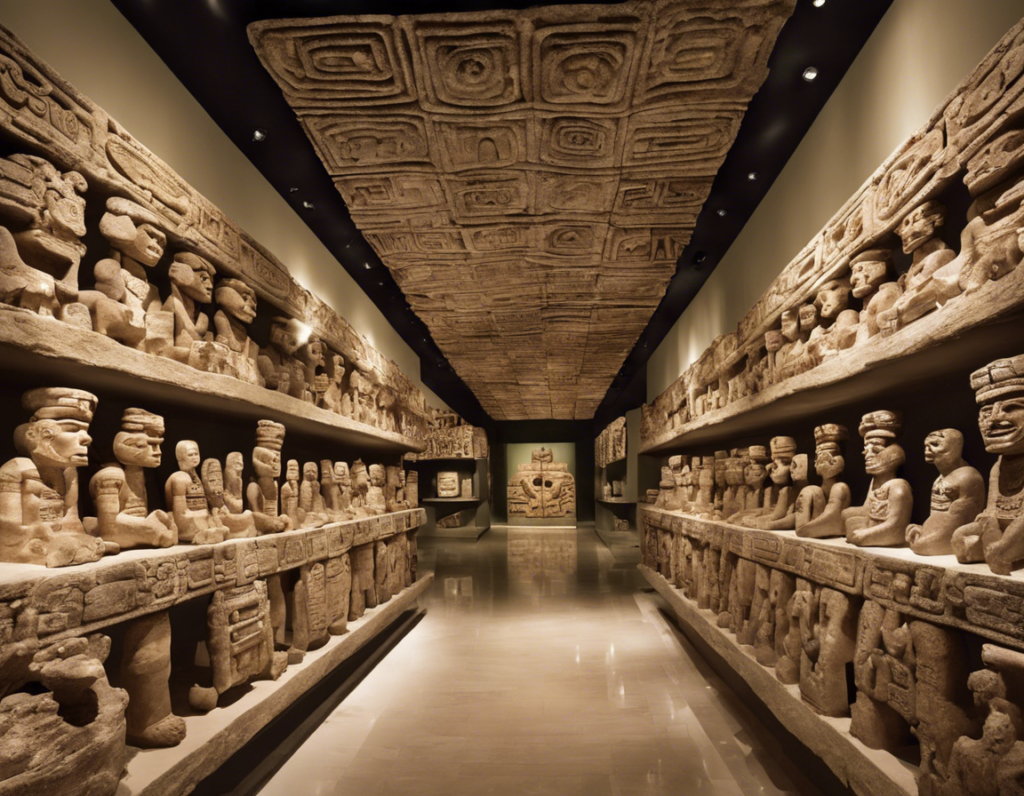
Transportation and Travel Tips in Mayan Temples, Mexico:
Visiting the Mayan temples in Mexico is an exciting adventure that combines rich history, stunning architecture, and beautiful landscapes. To make the most of your trip, here are essential transportation options and travel tips for navigating these ancient sites effectively.
Transportation Options
Renting a Car
Renting a car is one of the most convenient ways to explore the Mayan ruins, especially if you plan to visit multiple sites. It provides flexibility in your itinerary and allows you to travel at your own pace. Major car rental companies operate in cities like Cancun, Playa del Carmen, and Merida, making it easy to pick up a vehicle upon arrival.
- Transportation
Buses: Mexico has a reliable bus system that connects major cities and tourist areas. ADO is the primary bus company, offering comfortable services to popular destinations like Tulum, Chichen Itza, and Coba. Buses are an economical option, but schedules can be limited, so plan accordingly.
Collectivos: These shared vans operate between towns and are a budget-friendly option for shorter distances. They can be a fun way to meet locals and other travelers, but be prepared for a more crowded experience.
- Guided Tour Joining a guided tour can enhance your experience, providing insight into the history and culture of the Mayans. Many tours include transportation, which can alleviate the stress of navigating on your own. Options range from small group tours to private excursions, often covering multiple sites in one day.
- Taxis and Rideshares Taxis are readily available in tourist areas, but it’s advisable to agree on a fare before starting your journey. Rideshare apps like Uber operate in some cities, providing a convenient alternative for short trips.
- Bicycles
For sites like Coba, renting bicycles can be a fun way to explore the ruins and their surroundings. The site has many paths, and cycling allows you to cover more ground while enjoying the natural beauty of the area
Travel Tips for Visiting Mayan Temples
Plan Your Visits
Many popular sites can get crowded, especially during peak tourist seasons. Arriving early in the morning or later in the afternoon can help you avoid the crowds and enjoy a more intimate experience with the ruins.
- Stay Hydrated and Protected
The Yucatán Peninsula can be hot and humid, so bring plenty of water, sunscreen, and a hat. Most sites have limited shade, so prepare for exposure to the sun while exploring.
- Cash is King While credit cards are accepted at some locations, many smaller vendors and entrance fees require cash. Ensure you have enough pesos for snacks, souvenirs, and other expenses, especially in remote areas.
- Respect Cultural Site The Mayan ruins are sacred to many indigenous people. Always be respectful of the sites, follow posted rules, and avoid climbing on structures unless permitted. This helps preserve the integrity of these historical treasures.
- What to Pack Besides water and sunscreen, consider bringing a lightweight backpack, comfortable walking shoes, insect repellent, and a camera for capturing the breathtaking scenery. A portable charger can also be helpful for keeping your devices powered throughout the day.
- Get a Local SIM Card
For better connectivity, especially if you plan to explore off the beaten path, consider purchasing a local SIM card. This ensures you have access to maps and information while traveling to remote sites.
- Explore Nearby Attractions Many Mayan sites are located near beautiful cenotes, beaches, and charming towns. Plan to include these attractions in your itinerary for a well-rounded experience. For example, after visiting Tulum, you can relax at the nearby beaches or swim in a cenote.
- Take Advantage of Guided Tours If you’re not familiar with the history of the Mayans, consider hiring a local guide or joining a tour. A knowledgeable guide can provide context and stories that bring the ruins to life, enriching your visit.
Navigating the Mayan temples in Mexico can be a rewarding experience with the right planning and preparation. By utilizing various transportation options and following these travel tips, you can ensure a smooth and enjoyable journey through the ancient world of the Maya. Whether you’re exploring the iconic pyramids of Chichen Itza, the coastal ruins of Tulum, or the jungle-covered temples of Palenque, each site offers a unique glimpse into a fascinating civilization.
Wildlife in Mayan Temples, Mexico:
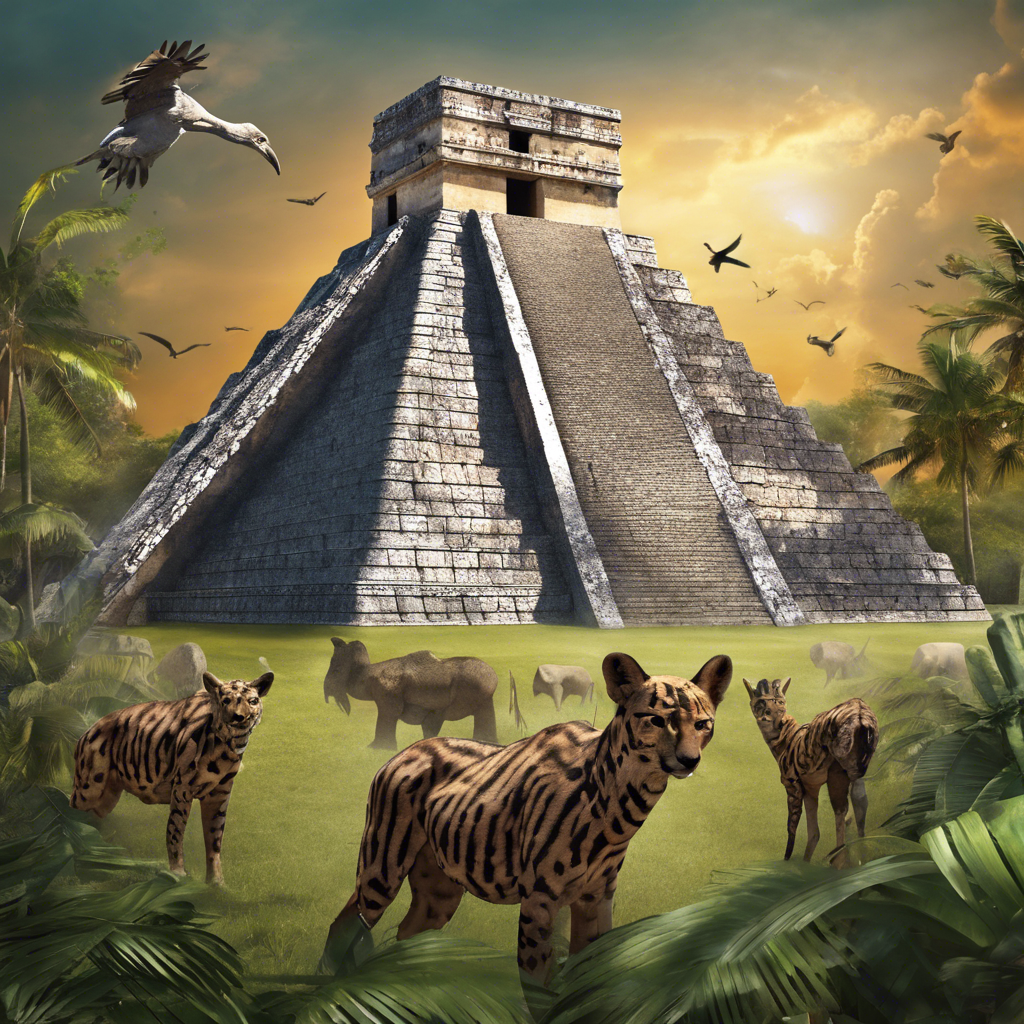
The wildlife surrounding the Mayan temples in Mexico is as rich and diverse as the history of the ancient civilization itself. From vibrant bird species to elusive mammals, the ecosystems around these archaeological sites offer visitors a unique opportunity to connect with nature. Here’s an exploration of the wildlife you can expect to encounter while visiting the Mayan temples in Mexico.
Key Wildlife in the Mayan Temple Regions
Black Spiny-Tailed Iguana
Often seen basking on the stones of ancient ruins, the black spiny-tailed iguana is a common sight at sites like Tulum and Coba. These lizards can reach lengths of up to four feet and are known for their impressive speed, making them the fastest lizard in the world. While they may look intimidating, they are primarily herbivorous and pose little threat to humans.
- Ocellated Turkey The ocellated turkey is a colorful bird endemic to the Yucatán Peninsula, easily recognized by its vibrant plumage of blue, green, and bronze. These turkeys were significant in Mayan culture and can often be spotted wandering through the ruins of Coba, adding a touch of natural beauty to the historical setting.
- White-Nosed Coati Resembling a mix between a raccoon and a lemur, the white-nosed coati is a social animal often seen in groups. These creatures are known for their playful behavior and can frequently be spotted around Tulum and other archaeological sites. In ancient Mayan culture, coatis were revered for their perceived mystical qualities.
- Yucatán Black Howler Monkey The Yucatán black howler monkey is known for its loud, distinctive calls that can be heard echoing through the jungle. These monkeys are often found in the more preserved forest areas near the ruins, providing a thrilling wildlife encounter for visitors.
- Loggerhead Sea Turtle The beaches along the Riviera Maya, particularly around Akumal, are vital nesting sites for loggerhead sea turtles. From May to October, female turtles come ashore to lay their eggs. Conservation efforts in the area allow visitors to witness this incredible natural event and even participate in turtle releases when hatchlings make their way to the ocean.
- Flamingos The Yucatán Peninsula is home to the largest flamingo colony in North America, particularly at the Rio Lagartos Biosphere Reserve and Celestun. These stunning birds can be seen during their mating season from November to February, and boat tours are available for close-up views.
- Crocodiles Both the American crocodile and the Morelet’s crocodile inhabit the wetlands and mangroves near the Mayan ruins. These reptiles are often seen basking in the sun or lurking in the waters of nature reserves like Sian Ka’an, where guided tours can help visitors spot them safely.
- Bird Species The Yucatán Peninsula boasts a rich avian diversity, with over 360 species of birds, including the Altamira oriole and the turquoise-browed motmot. Birdwatchers can enjoy spotting these colorful species in the jungles surrounding the temples.
- Tapirs Although rare and elusive, tapirs can occasionally be seen in protected areas like the Sian Ka’an Biosphere Reserve. These large mammals are excellent swimmers and play a vital role in the ecosystem by dispersing seeds.
- Bats Various species of bats inhabit the caves and cenotes in the region, playing crucial roles in pollination and seed dispersal. Watching thousands of bats emerge at dusk is an unforgettable spectacle for nature enthusiasts.
- Tips for Wildlife Viewing
Be Respectful: Always maintain a safe distance from wildlife and avoid disturbing their natural habitats. Observing animals in their environment is best done quietly and respectfully.
Best Times to Visit: Early mornings and late afternoons are often the best times for wildlife viewing, as many animals are more active during these cooler parts of the day.
Guided Tours: Consider joining guided wildlife tours that focus on the flora and fauna of the region. Knowledgeable guides can enhance your experience by providing insights and ensuring responsible wildlife observation.
Bring Binoculars: If you’re interested in birdwatching, a pair of binoculars will enhance your ability to spot and appreciate the diverse bird species in the area.
Conclusion
The wildlife surrounding the Mayan temples in Mexico adds an exciting dimension to your visit. From the colorful ocellated turkey to the majestic loggerhead sea turtles, the region is teeming with life that reflects the rich biodiversity of the Yucatán Peninsula. By taking the time to explore and appreciate these natural wonders, visitors can deepen their connection to both the ancient culture and the vibrant ecosystems that thrive in this beautiful part of the world.
Exploring the ancient Mayan temples in Mexico is a truly unforgettable experience, offering a glimpse into the rich history and culture of this remarkable civilization. From the iconic pyramids of Chichen Itza to the hidden gems of Palenque, each site offers its own unique charm and adventure. Whether you’re a history buff, a nature lover, or simply seeking a unique travel experience, the Mayan temples of Mexico are sure to leave a lasting impression. So pack your bags, lace up your hiking boots, and get ready to embark on an adventure of a lifetime!




